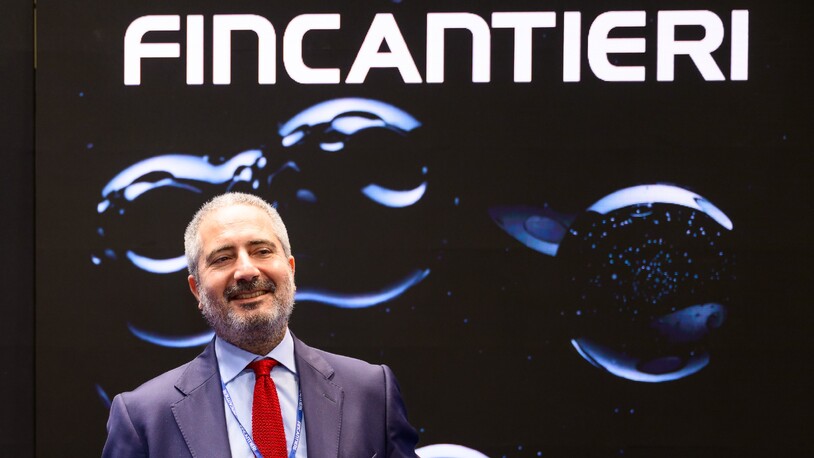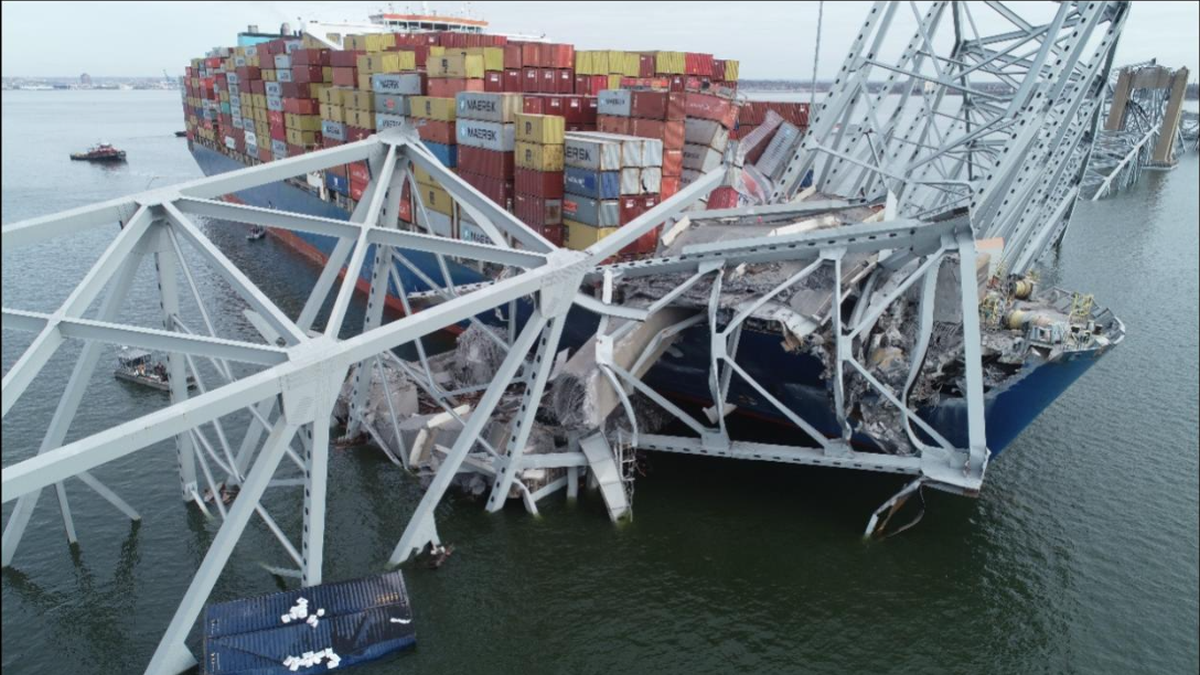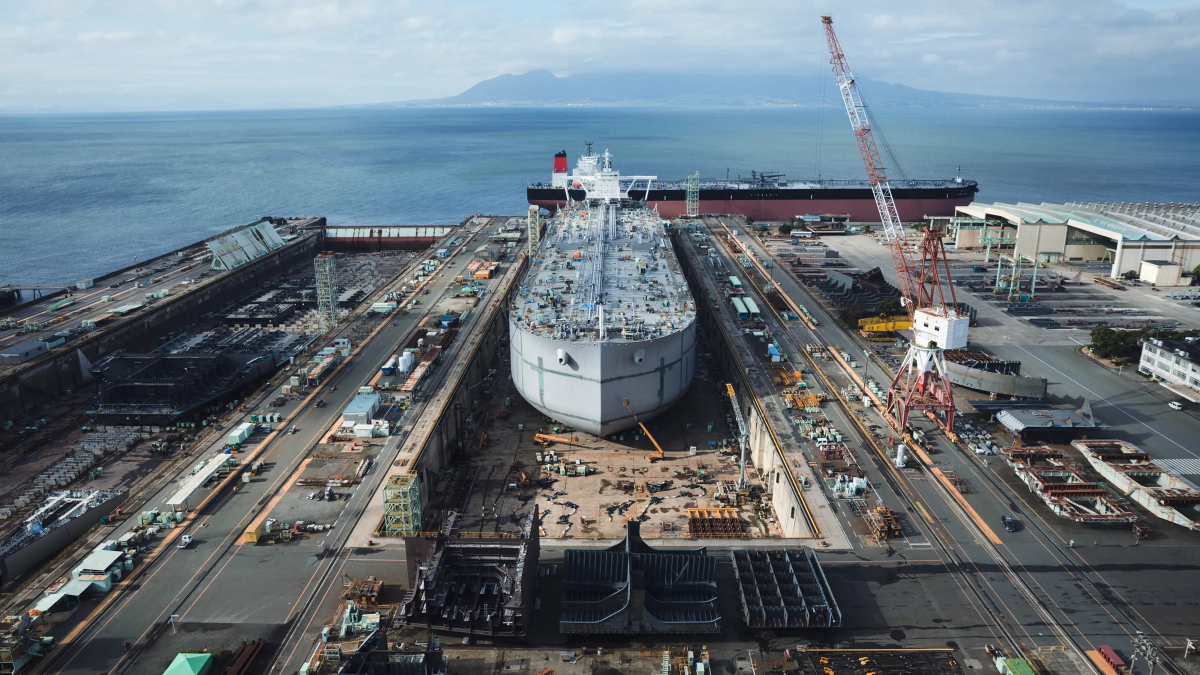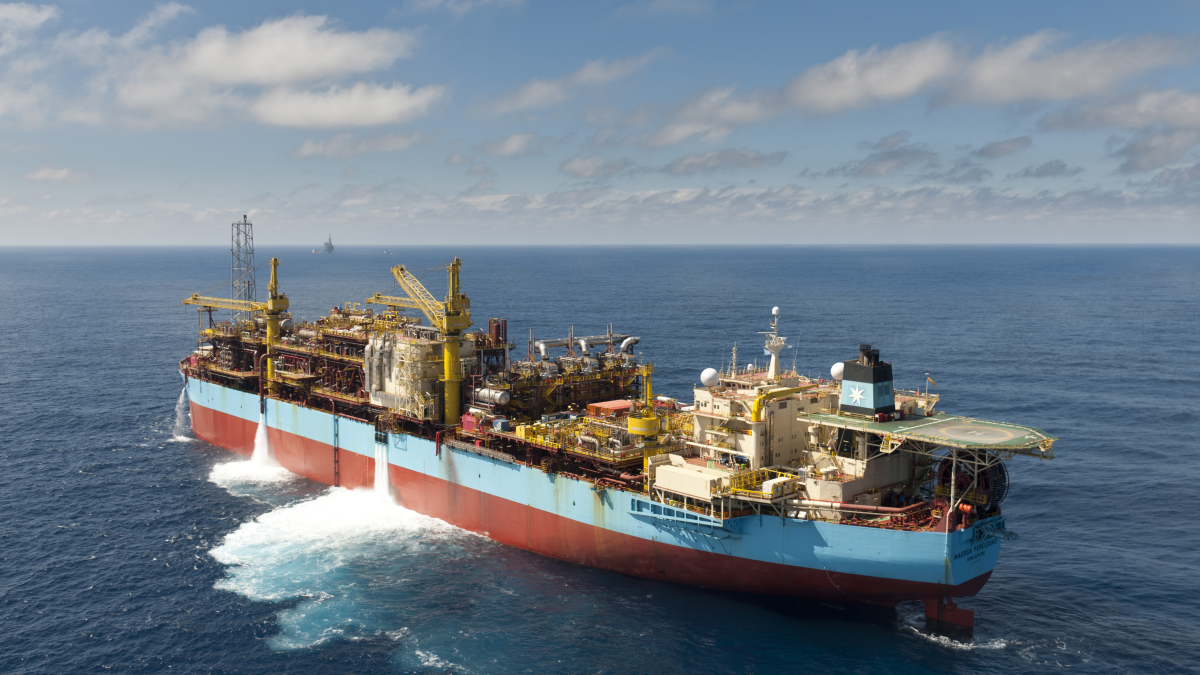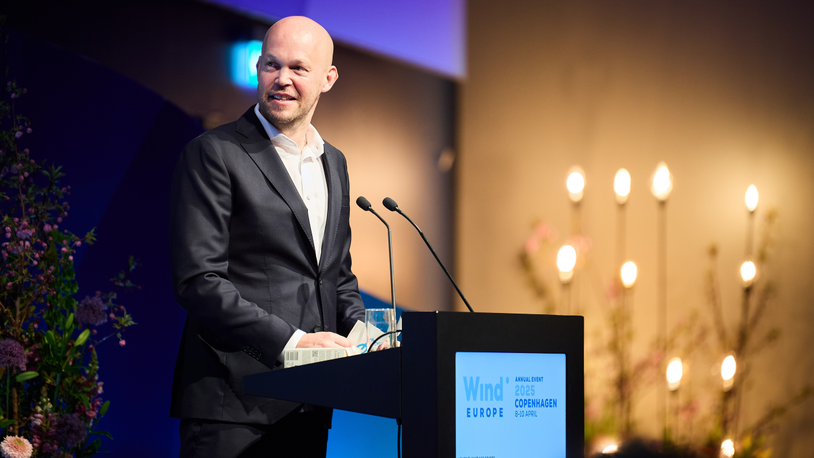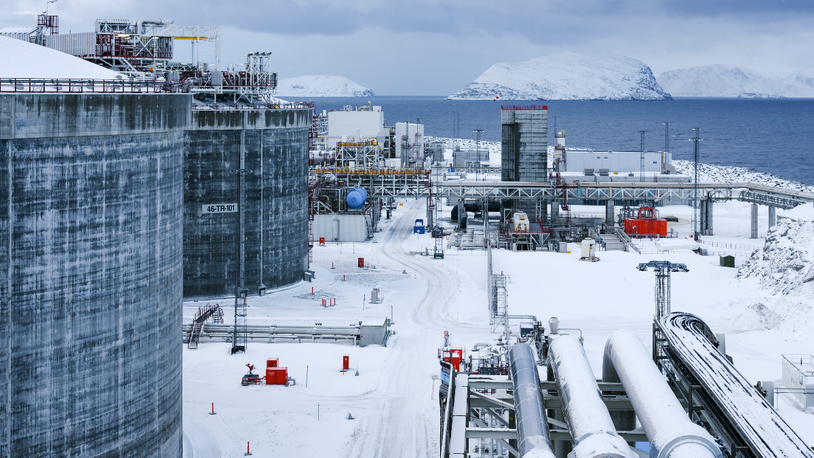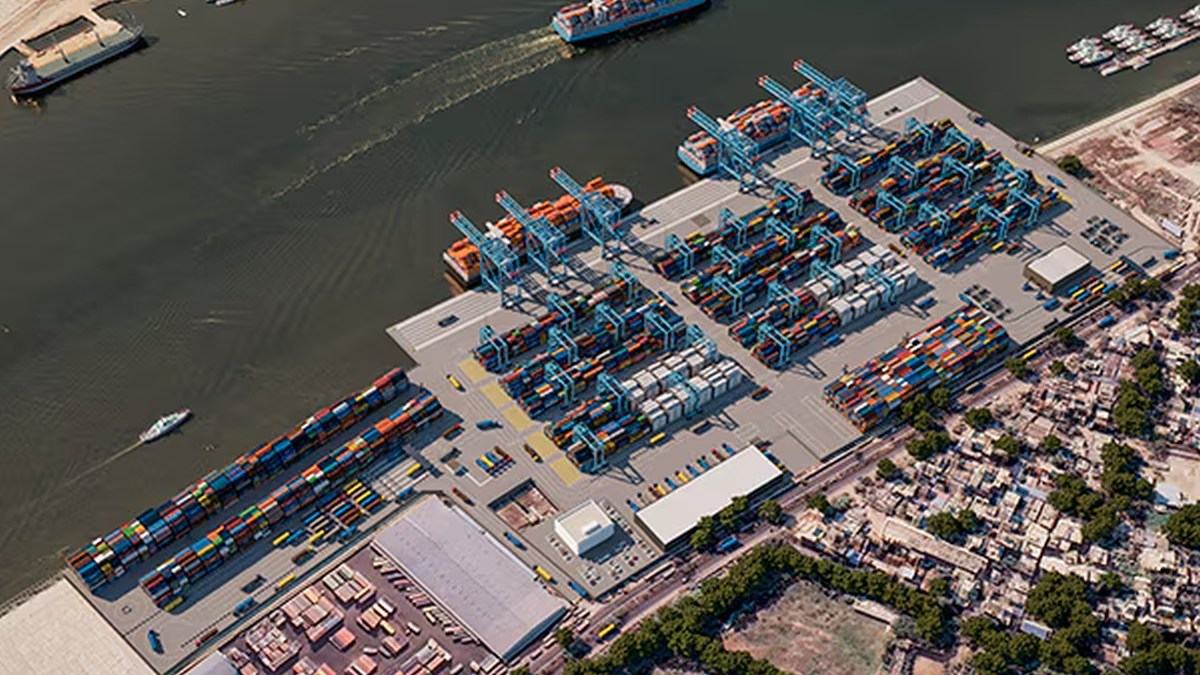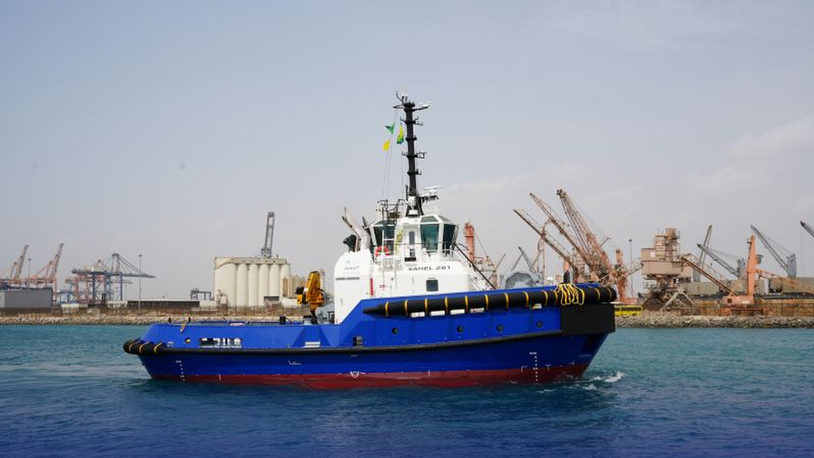Business Sectors
Events
Contents
Baltimore bridge collapse investigation: 'loose wire' on Dali led to blackout and allision
US investigators have concluded that a loose wire caused power outages on board the 9,962-TEU container ship Dali that led to an allision with and the eventual collapse of Baltimore’s Francis Scott Key bridge in March 2024
One incorrectly installed wiring connection is to blame for an electrical blackout that caused a huge container ship to hit the Francis Scott Key Bridge in Baltimore, Maryland, collapsing the bridge and killing six highway workers who were on it at the time, according to a US National Transportation Safety Board (NTSB) report.
During a public meeting on the findings of the investigation into the incident, NTSB investigators said the loose wire in the ship’s electrical system caused a breaker to unexpectedly open. Investigators found that "wire-label banding prevented the wire from being fully inserted into a terminal block spring-clamp gate, causing an inadequate connection".
The band around the wire widened the circumference of the wire around its connection to the clamp and stopped the wire from being fully inserted into the clamp gate that maintains the circuit path, or electrical connection, within the vessel’s wiring system.
The loose connection caused "a sequence of events that led to two vessel blackouts and a loss of both propulsion and steering near the 3.8-km Key Bridge" in the US’ East Coast container shipping hub of Baltimore, on 26 March 2024.
"After the initial blackout... Dali’s heading began swinging to starboard toward Pier 17 of the Key Bridge," the NTSB report said, noting that although "the pilots and the bridge team attempted to change the vessel’s trajectory... the loss of propulsion so close to the bridge rendered their actions ineffective."
A long stretch of the bridge collapsed into the river, and sections of the pier, deck and truss spans collapsed onto the vessel’s bow and forward-most container bays.
NTSB chairwoman Jennifer Homendy said her team had accomplished ’the impossible’ in isolating the single wire that caused the blackout on board Dali. She likened the effort to "hunting for a loose rivet on the Eiffel Tower," which is around the same height as the container ship’s 330-m length.
The NTSB found that quick actions by Dali pilots, shoreside dispatchers and the Maryland Transportation Authority to stop bridge traffic saved lives. In total, six people died in the incident. All six were highway workers on a seven-person road maintenance crew who were on the bridge when the vessel struck. One inspector survived the incident.
“Implementing NTSB recommendations in this investigation will prevent similar tragedies in the future,” Ms Homendy said.
Recommendations from NTSB include ’countermeasures’ to be put in place on the Francis Scott Key Bridge to reduce the bridge’s vulnerability to collapse on impact by oceangoing vessels.
In March 2025, the NTSB released a report recommending that 68 bridges across 19 US states conduct a vulnerability assessment to determine the risk of bridge collapse from a vessel collision. The recommendations came as part of the investigation process into the Francis Scott Key incident.
During its investigations, the NTSB found the Key Bridge was almost 30 times above the acceptable risk threshold for stuctural design of bridges deemed critical or essential to US transport infrastructure. The assessment was based on guidance established by the American Association of State Highway and Transportation Officials which came out after the bridge was built. NTSB found that many of the municipalities that own and maintain the bridges were unaware of the structural shortcomings.
As a result of its investigation, the NTSB said it has issued new safety recommendations to the US Coast Guard; US Federal Highway Administration; the American Association of State Highway and Transportation Officials; Nippon Kaiji Kyokai (ClassNK); the American National Standards Institute; the American National Standards Institute Accredited Standards Committee on Safety in Construction and Demolitions Operations A10; HD Hyundai Heavy Industries; Synergy Marine Pte Ltd; and WAGO Corp, the electrical component manufacturer; and multiple bridge owners across the nation.
Grace Ocean-owned, Synergy Marine-managed, Singapore-flagged box ship Dali was transiting out of Baltimore Harbor when it experienced a loss of electrical power and propulsion and struck the southern pier supporting the central truss spans of the Francis Scott Key Bridge, which subsequently collapsed.
Dali’s history of blackouts and background on the electrical fault from preliminary NTSB reports
In June 2024, the NTSB published the second of two preliminary updates in its investigation of the shipping accident that caused the collapse of a major interstate highway bridge on the US East Coast.
In its second preliminary report, the NTSB said its investigators had removed a terminal block and two sections of associated ’control wiring’ from the 9,962-TEU box ship Dali’s electrical system after witnessing "an interruption in the control circuit for HR1’s undervoltage release" while on board the vessel.
"We continue to examine the removed components at the NTSB Materials Laboratory. We will continue to evaluate the design and operation of the vessel’s electrical power distribution system, and investigate all aspects of the accident to determine the probable cause and identify potential safety recommendations," the NTSB report said.
A terminal block is an insulated block that connects two or more wires together, and an undervoltage release is a device that opens a breaker when voltage in an electrical system or component falls below what the NTSB called ’predetermined thresholds’.
The first preliminary report by the NTSB into the destruction of Baltimore’s Key Bridge confirmed Dali had suffered two blackouts on board within 10 hours of its departure from the port of Baltimore.
The initial NTSB report said the first blackout on board Dali during the ship’s port stay in Baltimore occurred during maintenance on a scrubber system, and the second blackout was linked to low fuel pressure in a backup generator.
Subsequent blackouts while the Synergy Group-managed, Maersk-chartered container ship transited out of the port of Baltimore caused the vessel to strike Baltimore’s Francis Scott Key highway bridge, resulting in the bridge’s collapse.
The initial NTSB report followed its description of the causes of in-port power outages by saying that Dali’s first blackout after it left the port of Baltimore on 26 March, and as it approached the Key Bridge, was caused when a pair of circuit breakers on the step-down transformers unexpectedly opened, or ’tripped’.
Notably, the low-voltage system on board powers the lighting as well as the vessel’s steering gear pumps and the main engine’s water pump cooling system.
Update on Dali crew
At the same time that it released its second preliminary report on the Dali incident, in June 2024, the NTSB said its investigators had finished their in-person interviews with the vessel’s crew. However, nine of the crew remain in the US, unable to leave.
In mid-2024, a spokesman for Dali shipmanager Synergy Marine, Darrell Wilson, confirmed that "eight of the crew are home and two other crew members will be leaving in the next couple of days" after a US judge approved a deal, reportedly agreed between the US Department of Justice, the US Coast Guard and an attorney for Dali’s owners, Grace Ocean, and manager, Synergy Marine.
The fate of the crew who remain – Indian and Sri Lankan nationals – is uncertain. The director of the Baltimore International Seafarers’ Center, Reverend Joshua Messick has, in past interviews, confirmed that the crew still in the US are required to remain there until litigation involving the ship’s allision with the bridge is finished.
In October 2024, the US Department of Justice (DOJ) agreed a settlement to recoup US$102M in costs incurred for its work to clear debris and restore access to the major shipping channel leading to Baltimore’s port. In September 2024, the US DoJ filed a civil lawsuit filed against the Singapore-based owners, Grace Ocean, and technical managers, Synergy Marine, of the large container ship. The lawsuit cited reckless conduct and negligence on the part of the vessel’s owners and operators while claiming for US$102M in costs incurred. Dali was under charter to AP Moller-Maersk at the time.
The rebuilding of the Francis Scott Key is reportedly over budget and behind schedule. A Bloomberg report said that Maryland officials have doubled estimates for the cost to rebuild the Francis Scott Key Bridge, to between US$4.3Bn and US$5.2Bn. They now anticipate completion of the rebuilt bridge in late 2030, two years behind schedule
In the weeks following the disaster in March 2024, the crew of 20 Indian nationals and one Sri Lankan on board Dali were required to stay on board and could not leave the vessel, including during the demolition of the hundreds of tonnes of steel bridge and cement roadworks pinning the vessel in place, according to a BBC report. Visa and shore travel restrictions as well as parallel investigations by the NTSB and the US’ Federal Bureau of Investigations (FBI) stopped the crew from leaving the vessel, and seizure of the crew’s phones by FBI investigators in their investigation left the crew cut off from communicating with the outside world.
Dali was cleared from under the wreckage of the Baltimore bridge in late May 2024. It underwent repairs and has been free to operate as part of a "security agreement" with US authorities.
Sign up for Riviera’s series of technical and operational webinars and conferences:
- Register to attend by visiting our events page.
- Watch recordings from all of our webinars in the webinar library.
Related to this Story
Events
Maritime Navigation Innovation Webinar Week
Offshore Support Journal Conference, Middle East 2025
© 2024 Riviera Maritime Media Ltd.

